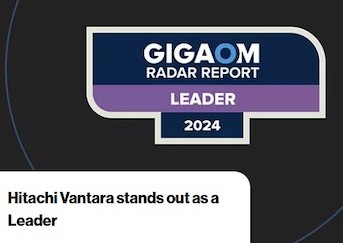New & Notable
Storage That Thinks Green: How to Cut CO₂ and Costs with One Smart Move
If your customers are prioritizing sustainability and efficiency, now’s the time to guide them on how to rethink their storage strategy. Get this new eBook and learn how...
Behind the Byline: The Tech Powering India’s 24/7 News Giant
With non-stop news cycles and massive data demands, Malayala Manorama turned to Hitachi Vantara and systems integrator Vertex for a future-ready IT overhaul that slashed...
Reimagine Your Storage Strategy: The Power of Software-Defined Storage
Stop wrestling with rigid storage. Join Hitachi Vantara experts and industry leaders in our new on-demand webinar to learn how software-defined storage is rewriting the...
Top of the Class: How Manor Lodge Transformed its Infrastructure for Seamless Digital Learning
This independent UK primary school modernized its aging IT infrastructure from frequent frustration to a reliable foundation of growth and innovation with Hitachi...
Turbocharged Storage: How BMW Shifted to a Managed All-Flash Storage Solution
The BMW Group partnered with Hitachi Vantara to implement a high-performance, all-flash storage solution that not only met its evolving needs but also delivered...
FarmaMondo Cures Outdated Data Infrastructure Ills with Hitachi Vantara VSP One
A specialty pharmaceutical provider needed to upgrade its data storage infrastructure to support a rapidly growing business and international users. Hitachi Vantara VSP...
Breaking Barriers: Hitachi and NTT Com Achieve Unprecedented Real-Time Data Synchronization Over 600 km
How next-gen storage virtualization and optical networks can redefine IT resilience for your customers.
Banking on Resilience: Building a Disaster-Proof Data Infrastructure with Hitachi EverFlex
In a preemptive move, a U.S.-based banking group upgraded its data center infrastructure to protect against natural disasters. Its modern data infrastructure improved...
Fueling the Future: How Data Platforms Will Drive Innovation
In a year defined by AI breakthroughs and digital transformation, data platforms are taking center stage. According to GigaOm’s latest report on primary storage, the...
Cooking Up Growth: La Molisana Uses Hitachi Vantara VSP One to Serve Secure and Sustainable Expansion
La Molisana worked with its IT partner EOSYS and Hitachi Vantara to modernize its data infrastructure to improve application performance, strengthen cyber resilience,...
- 1 of 8
- next ›










